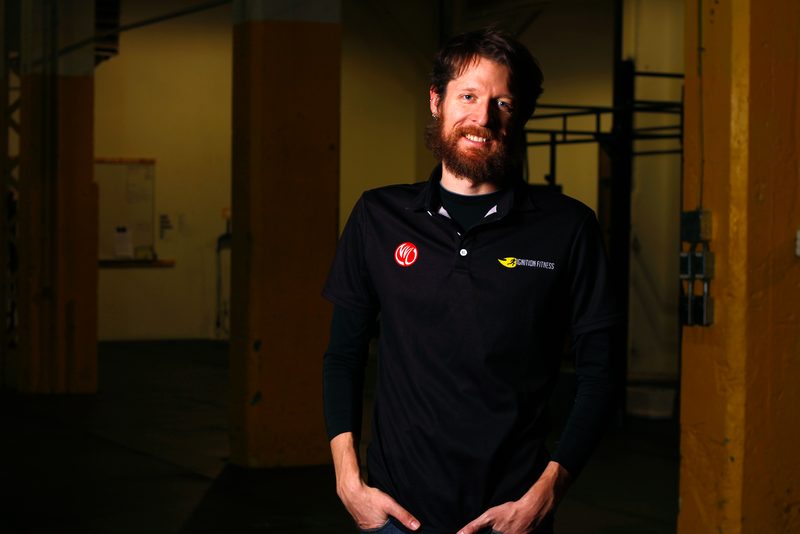How to set a training program for the New Year?

By Tommy Ferris

Sitting down to plan a training program for the New Year should be one of the most exciting times in your yearly triathlon schedule. However, setting up a program for the new year has to start with some downtime and reflection.
The first part of your new training program should include some rest. Having a bit of downtime after last season’s racing is very important. To start a new year of training and racing successfully, you have to be both physically and mentally ready. This will also be a great time to think about what worked and didn’t work with last season’s training and racing. Brainstorming with friends, doing some online research, or consulting with a coach could be a great way to come up with some new ideas for your training.
In order to produce success on race day, your training program must address your weaknesses and develop them. I try to build programs for athletes that start with a 4/3/2/1 structure, so that could be 4 rides, 3 runs, 2 swims, and 1 core/strength session for someone wanting to become a better rider. Or it could be 4 runs, 3 swims, 2 rides, 1 core/strength session for someone trying to improve their running. It varies with every athlete and depends on his or her strengths or weaknesses and availability to train. For this part of your planning it would be beneficial to sit down with your partner or family to know what training you can realistically commit to without taking you away from your responsibilities outside of training.
A successful training program allows you to mimic the conditions of your big race. Train How You Race is one of my core training philosophies, so if you live in low-elevation area with no hills and are hoping to do well at a high altitude and mountainous race like Ironman Boulder, you’d better include training and race simulation workouts at altitude. This rule could apply to any situation, such as a race that is known for being extremely hot and dry when you live in a cool and humid environment. The likelihood of doing well at a race increases dramatically when that race closely resembles your training environment.
When planning out your season, don’t forget that life happens. We train and race in the time available to us around time spent with family or at work. Important events or circumstances outside of our training pop up regularly and will take us away from our workouts. It happens to all of us. Consistency in training is key, and if your training schedule allows you to be consistent week after week, then missing workouts from time to time is ok. Be flexible and don’t be afraid to miss a couple workouts or readjust things to make fitting in training more realistic.
A successful training program must consider a number of factors, and building said program can range from being very simple to very complicated. If you’re confident with building your own program then go ahead and start putting some things down on paper or into a spreadsheet. And don’t forget about recovery. It’s often overlooked and you should make recovery the focus of every third or fourth week of training. If building your yearly program is an area that’s new to you or you’re feeling like some assistance would be beneficial, many coaching companies (including Ignition Fitness) offer coaching consultation services. Showing your program to an experienced coach and asking for some help or feedback could make all the difference in making this season your best ever.
More Considerations from Coach Tommy:
One of the keys to success on race day is choosing the right race and setting the right goals. If you have always wanted to win your age group or set a personal best time at a race with a lot of hills and steep climbs and you live and train in a pancake flat area, the likelihood of achieving that age group win or personal best time are slim. However, that’s not a reason to skip the race entirely. You can still do the race but make sure you adjust your goals accordingly to something more realistic, such as finishing such a challenging race in a time you’re happy with.
An important part of any new triathlon training program needs to include rebuilding or improving your endurance base. Make sure to include several long and steady swims, bike rides and runs in the early winter part of your training program. Over the winter this can be as simple as a handful of 2 hour or longer rides indoors on the trainer, or building up how far you can steadily swim or run in one session over a few weeks.
One part of a successful training program that can be easily overlooked is timing. Athletes often achieve peak fitness twice each season, usually mid-June and again in late August or September. This varies with each athlete and will depend a lot on things like how early in the year you began your training program. Starting serious training in January can leave you completely exhausted for a race in October or November. That’s a long season! Plan your season accordingly from the beginning and be sure to include a lot of rest. I often reward athletes with an extra week of recovery after 12-16 weeks of consistent, successful training. Those small rewards can make a huge difference and leave you feeling recharged and ready for more.
Tommy Ferris is the head coach at Ignition Fitness.
